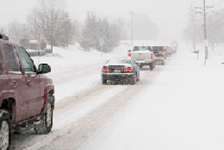
Learn About Ontario's Graduated G1, G2 and G Driver's Licenses
The rules around Ontario’s graduated licensing are a bit complex.
If you’re a teenager looking to get your driver’s licence or if you’re a parent who is unclear about what’s required for your son or daughter or family member to progress from a G1 to a G2 to a full G licence, you need to know the basics of Ontario’s G licensing system.
There are some basic requirements for anyone who drives in Ontario that must always be followed:
Driver's Licence: You must always have your driver’s licence with you.
Valid Permit and Plate: The vehicle you drive must have valid permit and licence plates.0
Insurance Coverage: The vehicle must have valid car insurance coverage and liability card.
For full details please Ontario Graduated Licensing go to the Ontario Government website.
REQUIREMENTS for DRIVING in ONTARIO
*If you live in Ontario, you must be at least 16 years old and have a valid Ontario driver’s licence to drive in this province.
*If you are a visitor to Ontario and want to drive while you are here, you must be at least 16 years old and have a valid driver’s licence from your own province, state, or country.
*If you are from another country and visiting Ontario for more than three months, you need an International Driver’s Permit from your own country. If you are taking up residence, you must get an Ontario driver’s licence.
*If you are a new resident in Ontario and have a valid driver’s licence from another province, state, or country, you can use it for 60 days after you move to Ontario. If you become a resident of Ontario, you must get an Ontario driver’s licence. Ontario has licence exchange agreements with every Canadian province and territory (including Canadian Forces Europe). Also with Australia, Austria, Belgium, France, Germany, Great Britain, the Isle of Man, Japan, Northern Ireland, Korea, Switzerland, and the United States.
APPLYING for a LICENSE
To apply for a licence, you must show proof of your legal name, date of birth (showing day, month, and year of birth) and signature. Documents must be original and valid. Photocopies and expired documents are not acceptable. Any one of the following documents may be used to satisfy the requirement to provide proof of legal name, complete date of birth and signature:
- Passport (Canadian or foreign
- Canadian Citizenship Card with photo
- Permanent immigration document
- Permanent Resident Card (PRC)
- Record of Landing (Form 1000)
- Confirmation of Permanent Residence (Form IMM 5292)
- Temporary immigration documents
- Student Authorization (IMM 1442)
- Employment Authorization (IMM 1442)
- Temporary Resident's Permit (IMM 1442)
- Visitor Record (IMM 1442)
- Report Pursuant to the Immigration Act (IMM 1442 with photo)
Additional documents are required if the document presented from the previous list does not indicate the legal name, complete date of birth (day, month, year) or signature.
The additional documents must provide proof of the missing or incomplete information.
The following documents are acceptable as proof of date of birth and legal name:
- Canadian or U.S. Birth Certificate
- The following documents are acceptable as proof of signature:
- Driver's Licence (Canadian and U.S. only)
- Identity Card with signature (issued by Canadian province/territory or U.S. state authority)
- Canadian Certificate of Indian Status
- Ontario Student Card with signature
- Ontario health card with applicant’s signature. (Clients may choose to produce their Ontario health card for proof of signature. *The health card and health number will not be recorded or photocopied)
Ontario's G Licence System Has 3 Levels: G1, G2 and Full G Licence
To drive with a full G licence in Ontario, everyone must meet the requirements at each driving level – from G1 to G2 through to the full G licence.
That’s why Ontario’s system for training and licensing drivers is called a graduated licensing program.
You must graduate from one level to the next.
New drivers applying for their first car or motorcycle licence enter Ontario’s graduated licensing system.
Graduated licensing lets new drivers get driving experience and skills gradually. The two-step licensing process takes at least 20 months to complete.
To apply for a licence, you must be at least 16 years old, pass a vision test and pass a test of your knowledge of the rules of the road and traffic signs. After you pass these tests, you will enter Level One and get a Class G1 licence.
You must pass two road tests to become fully licensed.
Passing the first road test lets you move to Level Two (Class G2), and the second one gives you full Class G driving privileges.
The G1 Licence
To apply for a G1 driver’s licence, which is Ontario’s learner’s permit, you must be at least 16 years old, pass an eye test, and pass a written test about the rules of the road and traffic signs.
Once you’ve passed your eye and written knowledge test, you are now a G1 licence holder (a beginner driver). But you are subject to several G1 restrictions.
G1 Restrictions and Driving Rules
1.Must be accompanied by a full G licensed driver: you must always be accompanied by another G licensed driver in the passenger seat.
2. This full G licence holder is required to have been fully licensed for at least four years and must maintain a zero-blood alcohol level if he or she is 21 or under.
3. If the accompanying full G licence holder with at least four years driving experience is over 21, this person must have a blood alcohol level of less than .05 – a requirement in place so that if the accompanying driver had to drive, he or she could legally do so.
4. Zero-blood alcohol: as the driver, you must have a zero-blood alcohol level always.
5. Seat belts: There must be a working seatbelt for every passenger.
6. No driving between 12 am - 5 am: as a G1 driver, you cannot drive between midnight and 5 am.
7. No Driving On 400 Highways: As a G1 driver, you cannot drive on 400-series highways or expressways including The Gardiner Expressway, Don Valley Parkway, and The Queen Elizabeth Way (QEW) unless accompanied by a licensed driving instructor.
8. But you can drive anywhere in Northwest Ontario provided you meet conditions #1 to #6
G1 Licence Practice Period and Road Test
The minimum practice period for G1 drivers before they can take the G1 road test is:
8 Months With Driver's Training : You can move more quickly through the G licensing system if you take drivers education from a MTO approved driving school.
By taking driver training through one of these schools, you’re eligible to take the G1 road test just 8 months after you passed your written test instead of after a year.
12 Months Without Driver's Training : You are not eligible to take the G1 road test until 12 months after you have passed your written test unless you have taken an approved drivers education course.
You can book and pay for your road test online. Note VISA debit is not accepted.
You can also phone 1-888-570-6110. This is an automated booking line.
You can also go in-person to a DriveTest Centre. Most centres are open Monday – Friday from 9 am to 5 pm. You do not have to accept the time and date they give you, to receive a time and date of your preference, you may have to wait a week or two longer if you are willing to be patient.
The G2 Licence
To move to the G2 licence, you must pass a road test and have had your G1 for 8 months (if you have taken driver training with an approved driving school) or 1 year if you practiced your driving skills without using an approved driving school. Once you pass your G1 road test and have a G2 licence, there are three basic privileges and requirements that come into effect.
G2 Restrictions and Driving Rules
*12 Month Practice Period: You may practice with your G2 license for 12 months, without the need for another experienced driver in the vehicle, on any Ontario roads, at any time.
*Zero Blood Alcohol: You must maintain a zero-blood alcohol level.
*All Passengers Must Wear Seatbelts: You must carry only as many passengers as there are working seatbelts.
Additional G2 Restrictions for Drivers 19 And Under
Night Driving Restrictions for First 6 Months: You must drive for the first six months with only one passenger who is 19 or under between midnight and 5 a.m.
Night Driving Restrictions After 6 Months: You may drive after the first six months with up to three passengers 19 or under between midnight and 5 a.m.
Night Driving Restrictions Exceptions: These conditions do not apply if you have a fully licensed driver in the car (with at least four years driving experience) OR if your passengers are all immediate family members such as a parent, brother, or sister.
The Full G Licence
Class G
Allowed to drive any car, van or small truck or combination of vehicle and towed vehicle up to 11,000 kilograms provided the vehicle towed is not over 4,600 kilograms.
A pickup truck towing a house trailer exceeds 4,600 kilograms, but the total combined weight of the truck and trailer does not exceed 11,000 kilograms is deemed a Class G vehicle.
A Class G vehicle has a maximum capacity of 11 passengers.
Before you can get a full G licence you must have your G2 licence for at least 12 months (or 8 months with driver's training) AND pass the G2 road test.
After successfully passing the G2 road test, you are now a full G licence holder and are older than 21 you can enjoy driving on Ontario without restrictions.
If you are 21 or younger there are some restrictions.
G Restrictions for Drivers 21 And Younger
Note that if you are 21 years old or younger you must have a zero-blood alcohol level when driving.
For complete details on how new drivers can get their Ontario driver’s licence, visit the Ontario Government website explaining the graduated licensing system.
Incidental Notes
Note: 1. Do you know that you do not have to move up to a G license. You can re-take the G2 test if you wish, but it will restrict the advantages you gain by getting your full G license as well it may affect any further insurance reductions. If you fail, you will go back to a G1.
Note: 2. If you don’t go for your G2 (called a G1 exit test) after 5 years when your license expires you will have to re-apply for your G1 (see link). You will receive a notice in the mail before your licence expires. The "Notice of Novice Driver's Licence Expiry" will alert you to the expiry date of your licence and explain the test options available to you, read it carefully. https://www.drivetest.ca/licences/expired-licences.html
Note: 3. If you wait the 5 years and your G2 license is expiring and fail the G test (called a G2 exit) you will go back to a G1 driver. Go for your G test after one year of obtaining your G2 and you *might qualify to save another 10% on your insurance. * Talk to an insurance agent or broker for proper advice.
*For all advice on the graduated license system please consult the Ministry of Transportation website.
*For all advice on insurance, talk to your insurance agent or a Registered Insurance Broker of Ontario.





